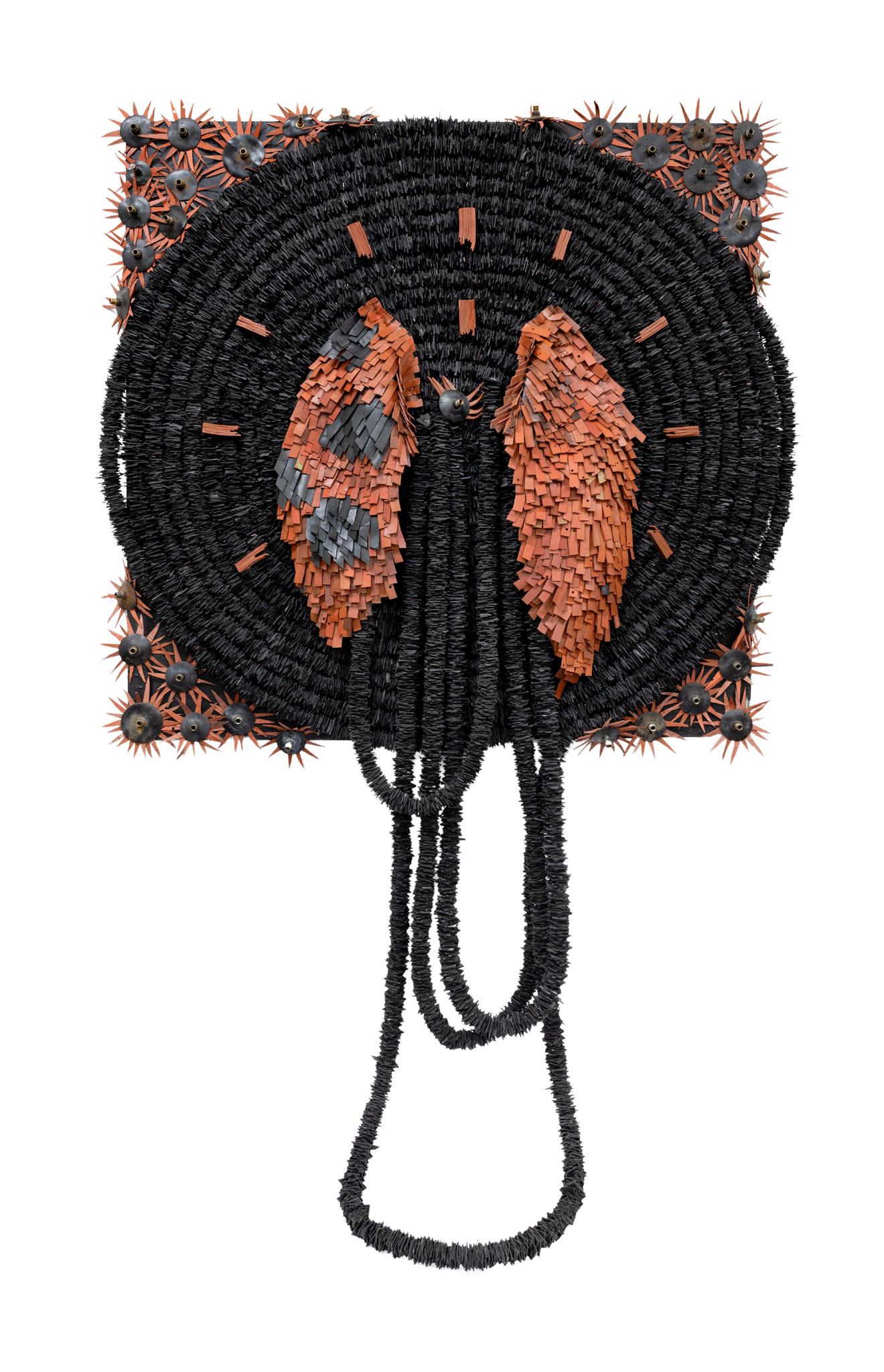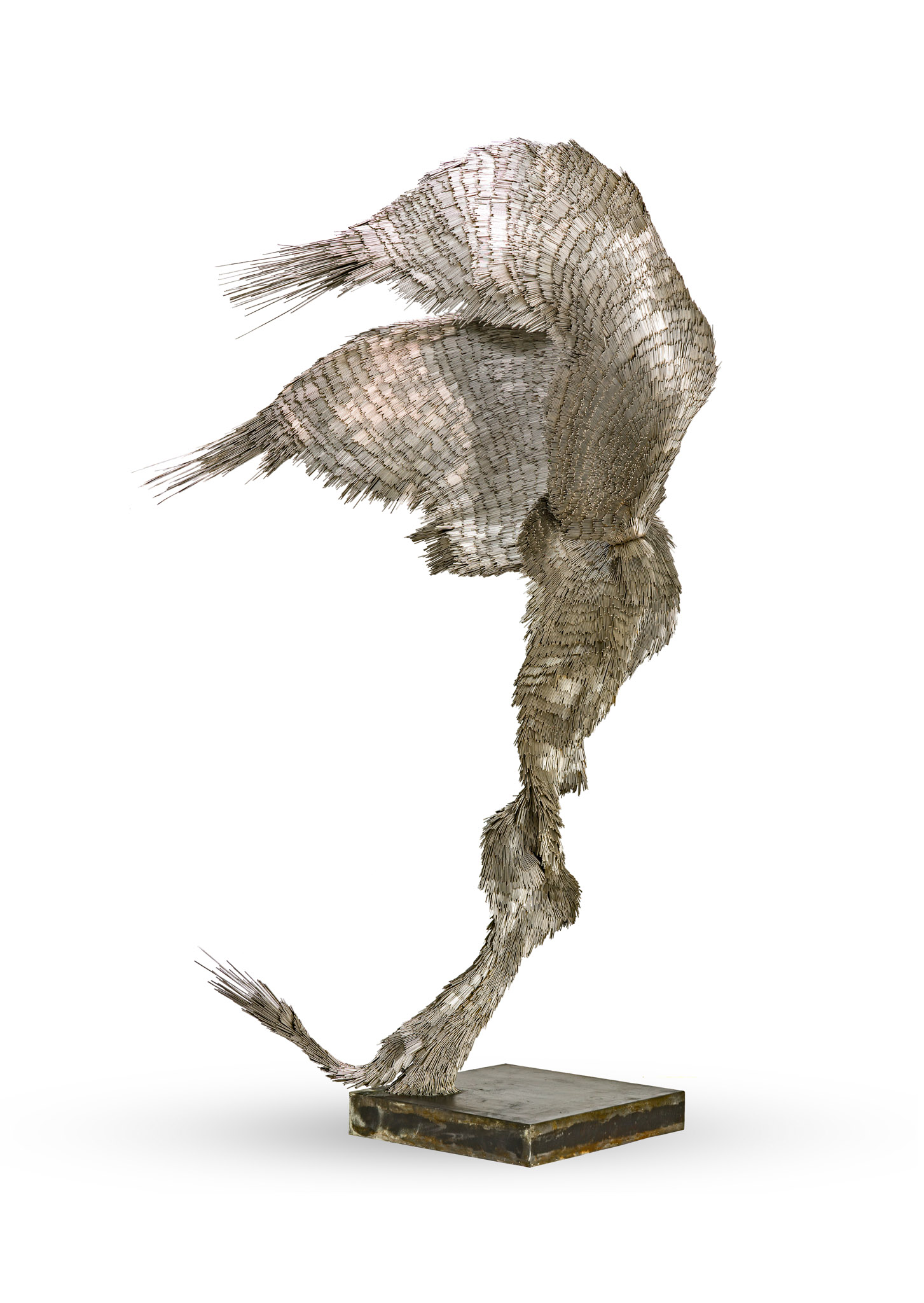Gallery 1
CASTED
Scultura Italiana with Patrick Bongoy & Jake Michael Singer
27 November 2023 - 28 January 2024
This exhibition is an appreciation of the expressive artistic period that transformed and even transfigured anthropomorphic representation and informed the alternative use of materials. The selection of mid-20th-century sculpture in conversation with 21st-century contemporary pieces by both Patrick Bongoy (b1980) and Jake Michael Singer (b1991) challenges the viewer with forms and materials that are often disquieting, aggressive, bold, and textured. Texture places itself at the forefront of Singer and Bongoy’s visually innovative work even though their use of material is worlds apart – thousands of stainless-steel rods of various lengths transforming into a ‘coat of feathers’ contrasted to recycled, upcycled rubber and inner tubes in the most delicate cuts, braids and weaves resulting in layered abstract yet metaphoric tapestries. With the Italians’ experimentation and expressive mark-making, the aesthetics of the surfaces are foregrounded yet juxtaposed with the contemporary artists. Harmony is found with wing-shaped forms that echo through the space – a sign of freedom, liberation or even flight.
The Modernist works represented showcase artists who rejected the tropes of representational art and typical views of historic, religious, and romantic ideals. Disenchanted by the times and struggles they had witnessed, these post-war sculptors searched for freedom and new approaches to artistic production. In comparison, the work of Bongoy, born in the Democratic Republic of Congo, drives deep into the history and economic displacement of the country, its people, labour-intensive work, and latex harvesting, leading to human and environmental erosion. Singer celebrates the “Murmurations” that echo the shapes when a flock of birds or even crowds of people move – the flow and waves this creates, the freedom of form it lends itself to. This craving for freedom is felt by Bongoy’s tiers and draping of rubber strings and weaves, breaking free from a rigid or squared-off canvas on a wall.
In this selection or collective of varied approaches to sculptural form and material, the works date as early as the 1950s up to the contemporary artists’ most recent creations. The structural presence of Franco Garelli’s (1909 – 1973) striking and bold forms, the playful and intimate characters created by Guliutte Scalini (1912 – 1966), the petite and fragile work of Luciano Minguzzi (1911 – 2004) – all have dainty qualities that can be closely compared to Bongoy’s woven elements. Augusto Perez’s (1929 – 2000) transforming and mysterious figures placed amongst the rubber tapestries whisper the fragmented identities represented through Bongoy’s references to the rubber trade.
The patina and unusual attention to the surfaces of Francesco Somaini’s (1926 – 2005) and Basaldella Mirko’s (1910 – 1969) pieces echo the ancient as the sculptures almost appear as archaeological artefacts. This, in comparison with Singer’s vibrant colour variations on his ‘Murmurs’, challenges the traditional approaches to the textural in sculpture. Further similarity in form and material choice is seen in the constructed and welded works of stainless steel and iron by Berto Lardera (1911 – 1989) and winged subjects by Pietro Cascella (1921 – 2008), Marcello Mascherini (1906 – 1983), Quinto Ghermandi (1916 – 1994) and Giacomo Benevelli (1925 – 2011).
The play at semi and full abstraction is a testament to the confidence of these sculptors and artists in their unique creations of once-off works in radical mediums. Although several of these artists were and are accomplished multi-disciplinary artists, they each have a love for sculpture. The nearly 30 sculptures by 16 artists, though vastly different in appearance, share a commonality in their approach to materiality. The mediums are celebrated in their raw and brutal form, exposing rough yet soft edges and welds to this purpose. As they embrace the new, they reference metaphorical, ancient, and even biblical figures and themes. Bringing these 20th-century artists’ work to light in conversation with two selected 21st-century artists reminds us that the principles of experimentalism in applied art offer continuous opportunities to transgress the boundaries of art practice.




